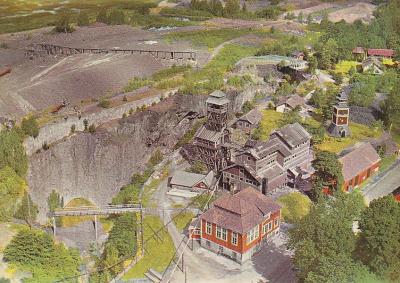Österbybruk & Dannemora
09/20/2015 09:04

Österbybruk is small community with a couple of thousand inhabitants, about 45 km north-east of Uppsala. There is a grand manor house with stables, ponds, outbuildings, smithies, and an old forge spread round a big park. The setting is very beautiful and tranquil.
Ironworks
The Wallonian ironworks period lasted from the early 1600's well into the 1900's. Thirty ironworks were established, many of them in Uppland. During that period, Swedish oregrounds iron was world leading because of its high quality. A large part of the production was exported, mainly to England. Oregrounds iron was a high-grade, semi-finished product, which was further processed into finished articles by the customer.
Uppland had all the necessary natural resources for iron; ore from the Dannemora mine, forests for charcoal and water to power the hammers in the forges. The ironworks were far more than just a workplace where many people worked and lived all their lives, they grew to become important communities. Working conditions were harsh, but the management also took a great social responsibility.
The Walloons were recruited to Sweden by far-sighted business leaders who realized the value of their professional skills and their craftsmanship.
Today, most of the ironworks villages are preserved. They are mainly visited by tourists, but some still have an active metal industry.
When we are at Österbybruk, it is interesting to look down into the pit of the mine at Dannemora, it is only a km or two away.

The Dannemora mine was one of the most important iron ore mines in Sweden. The mine was closed by its owners SSAB in 1992. It may have been open since the 13th century, but the first documentary reference was in 1481. The mine supplied all the ironworks making oregrounds iron by the Walloon process (using a blast furnace and finery forge), such as Österby and Leufsta (now Lövsta). The mine has a depth of 640 metres.

For more information see: https://en.wikipedia.org/wiki/Dannemora_mine

It was built in the late 1400s and the bell tower was erected in 1753. The mural paintings are well-preserved and very beautiful. There are a couple of medieval artefacts, including the crucifix in the church.
This will be a full day with hardly any costs. We will be out in the open the whole day, so let’s hope for good weather!